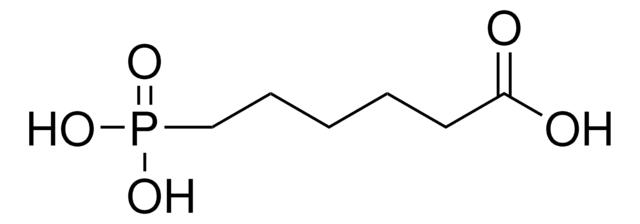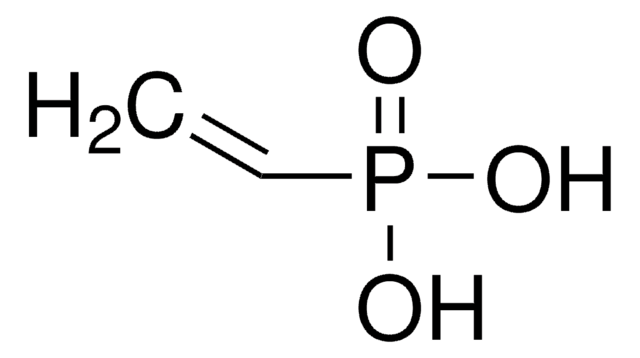777161
11-Hydroxyundecylphosphonic acid
≥95% (GC)
Synonyme(s) :
P-(11-Hydroxyundecyl)phosphonic acid
About This Item
Produits recommandés
Pureté
≥95% (GC)
Forme
powder
Pf
107-111 °C
Chaîne SMILES
OCCCCCCCCCCCP(O)(O)=O
InChI
1S/C11H25O4P/c12-10-8-6-4-2-1-3-5-7-9-11-16(13,14)15/h12H,1-11H2,(H2,13,14,15)
Clé InChI
PPCDEFQVKBXBPS-UHFFFAOYSA-N
Description générale
Application
Organophosphonic acid self-assembled monolayers (SAMs);
A hydroxyalkylphosphonate monolayer used to covalently bind primary amine groups in protein domains using chloroformate-derived crosslinking
Mention d'avertissement
Warning
Mentions de danger
Conseils de prudence
Classification des risques
Eye Irrit. 2 - Skin Irrit. 2 - STOT SE 3
Organes cibles
Respiratory system
Code de la classe de stockage
11 - Combustible Solids
Classe de danger pour l'eau (WGK)
WGK 3
Point d'éclair (°F)
Not applicable
Point d'éclair (°C)
Not applicable
Certificats d'analyse (COA)
Recherchez un Certificats d'analyse (COA) en saisissant le numéro de lot du produit. Les numéros de lot figurent sur l'étiquette du produit après les mots "Lot" ou "Batch".
Déjà en possession de ce produit ?
Retrouvez la documentation relative aux produits que vous avez récemment achetés dans la Bibliothèque de documents.
Les clients ont également consulté
Notre équipe de scientifiques dispose d'une expérience dans tous les secteurs de la recherche, notamment en sciences de la vie, science des matériaux, synthèse chimique, chromatographie, analyse et dans de nombreux autres domaines..
Contacter notre Service technique









